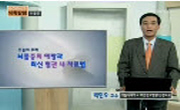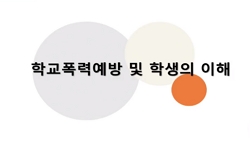Postoperative airway aspiration is not uncommon in patients with head and neck cancer. Airway aspiration has serious consequences, such as swallowing disorders, nutrition-related health problem, or reducing the quality of life due to maintenance of tr...
http://chineseinput.net/에서 pinyin(병음)방식으로 중국어를 변환할 수 있습니다.
변환된 중국어를 복사하여 사용하시면 됩니다.
- 中文 을 입력하시려면 zhongwen을 입력하시고 space를누르시면됩니다.
- 北京 을 입력하시려면 beijing을 입력하시고 space를 누르시면 됩니다.

두경부암 환자에서 기도 흡인의 예방과 치료를 위한 수술 전략 = Surgical Strategies for Prevention and Treatment of Airway Aspiration in Head and Neck Cancer Patients
한글로보기https://www.riss.kr/link?id=A105477535
-
저자
백민관 ((의료)길의료재단) ; 김동영 (가천대학교) ; Baek, Min Kwan ; Kim, Dong Young
- 발행기관
- 학술지명
- 권호사항
-
발행연도
2018
-
작성언어
Korean
- 주제어
-
등재정보
KCI등재후보
-
자료형태
학술저널
- 발행기관 URL
-
수록면
9-13(5쪽)
-
KCI 피인용횟수
0
- 제공처
- 소장기관
-
0
상세조회 -
0
다운로드
부가정보
다국어 초록 (Multilingual Abstract)
Postoperative airway aspiration is not uncommon in patients with head and neck cancer. Airway aspiration has serious consequences, such as swallowing disorders, nutrition-related health problem, or reducing the quality of life due to maintenance of tracheal or nasogastric tubes. The postoperative oropharyngeal defect due to the surgery may interfere with normal swallowing reflex, or the laryngeal dysfunction caused by radiation therapy may cause severe airway aspiration, which may lead to complications such as dyspnea and pneumonia. Complete removal of the disease is also important in the treatment of head and neck cancer, but it is necessary to select a method to avoid and predict the occurrence of airway aspiration according to the treatment method. The most important factor to prevent airway aspiration after surgery is to preserve the proper volume of the oropharynx and to preserve at least one of the cricoarytenoid joint function. It is also the most effective way to reduce additional complications by seeking appropriate surgical treatment according to airway aspiration status. The purpose of this study is to review the operative methods that can induce airway aspiration and consider the prevention and treatment strategy through review of the literature.
참고문헌 (Reference)
1 Bulow M, "Videomanometric analysis of supraglottic swallow, effortful swallow, and chin tuck in patients with pharyngeal dysfunction" 16 (16): 190-195, 2001
2 Fujimoto Y, "Usefulness and limitation of crico-pharyngeal myotomy and laryngeal suspension after wide resection of the tongue or oropharynx" 101 (101): 307-311, 1998
3 Cavalot AL, "The importance of preoperative swallowing therapy in subtotal laryngectomies" 140 (140): 822-825, 2009
4 Lin Z, "The four phases of esophageal bolus transit defined by high-resolution impedance manometry and fluoroscopy" 307 (307): G437-G444, 2014
5 Kaatzke-McDonald MN, "The effects of cold, touch, and chemical stimulation of the anterior faucial pillar on human swallowing" 11 (11): 198-206, 1996
6 Wein RO, "The current role of vertical partial laryngectomy and open supraglottic laryngectomy" 29 (29): 201-214, 2005
7 Schechter GL, "Systemic causes of dysphagia in adults" 31 (31): 525-535, 1998
8 Zuydam AC, "Swallowing rehabilitation after oro-pharyngeal resection for squamous cell carcinoma" 38 (38): 513-518, 2000
9 Burnip E, "Swallowing outcomes following surgical and non-surgical treatment for advanced laryngeal cancer" 127 (127): 1116-1121, 2013
10 Martini DV, "Swallowing and pharyngeal function in postoperative pharyngeal cancer patients" 76 (76): 450-453, 1997
1 Bulow M, "Videomanometric analysis of supraglottic swallow, effortful swallow, and chin tuck in patients with pharyngeal dysfunction" 16 (16): 190-195, 2001
2 Fujimoto Y, "Usefulness and limitation of crico-pharyngeal myotomy and laryngeal suspension after wide resection of the tongue or oropharynx" 101 (101): 307-311, 1998
3 Cavalot AL, "The importance of preoperative swallowing therapy in subtotal laryngectomies" 140 (140): 822-825, 2009
4 Lin Z, "The four phases of esophageal bolus transit defined by high-resolution impedance manometry and fluoroscopy" 307 (307): G437-G444, 2014
5 Kaatzke-McDonald MN, "The effects of cold, touch, and chemical stimulation of the anterior faucial pillar on human swallowing" 11 (11): 198-206, 1996
6 Wein RO, "The current role of vertical partial laryngectomy and open supraglottic laryngectomy" 29 (29): 201-214, 2005
7 Schechter GL, "Systemic causes of dysphagia in adults" 31 (31): 525-535, 1998
8 Zuydam AC, "Swallowing rehabilitation after oro-pharyngeal resection for squamous cell carcinoma" 38 (38): 513-518, 2000
9 Burnip E, "Swallowing outcomes following surgical and non-surgical treatment for advanced laryngeal cancer" 127 (127): 1116-1121, 2013
10 Martini DV, "Swallowing and pharyngeal function in postoperative pharyngeal cancer patients" 76 (76): 450-453, 1997
11 Caner Kılıç, "Swallowing and Aspiration: How Much Is Affected by the Number of Arytenoid Cartilages Remaining After Supracricoid Partial Laryngectomy?" 대한이비인후과학회 10 (10): 344-348, 2017
12 Pauloski BR, "Surgical variables affecting swallowing in patients treated for oral/oropharyngeal cancer" 26 (26): 625-636, 2004
13 Habal MB, "Surgical treatment of life-endangering chronic aspiration pneumonia. Use of an epiglottic flap to the arytenoids" 49 (49): 305-311, 1972
14 Konsulov SS, "Surgical treatment of anterolateral tongue carcinoma" 47 (47): 20-23, 2005
15 Sasaki CT, "Surgical closure of the larynx for intractable aspiration" 106 (106): 422-423, 1980
16 Montgomery WW, "Surgery to prevent aspiration" 101 (101): 679-682, 1975
17 Kirchner JC, "Surgery for aspiration" 17 (17): 49-56, 1984
18 Spriano G, "Supracricoid partial laryngectomy as salvage surgery after radiation failure" 24 (24): 759-765, 2002
19 Liu B, "Study of reserving unilateral arytenoid cartilage to improve voice quality in supracricoid partial laryngectomy with anastomosis of cricoid cartilage, base of tongue and epiglottis" 19 (19): 961-963, 2005
20 Kruse-Losler B, "Score system for elective tracheotomy in major head and neck tumour surgery" 49 (49): 654-659, 2005
21 Smith JE, "Risk factors predicting aspiration after free flap reconstruction of oral cavity and oropharyngeal defects" 134 (134): 1205-1208, 2008
22 Politi M, "Review of segmental and marginal resection of the mandible in patients with oral cancer" 120 (120): 569-579, 2000
23 Price LH, "Reproducibility patterns of multiple rapid swallows during high resolution esophageal manometry provide insights into esophageal pathophysiology" 26 (26): 646-653, 2014
24 Rademaker AW, "Recovery of postoperative swallowing in patients undergoing partial laryngectomy" 15 (15): 325-334, 1993
25 Denk DM, "Prognostic factors for swallowing rehabilitation following head and neck cancer surgery" 117 (117): 769-774, 1997
26 Breunig C, "Predictable swallowing function after open horizontal supraglottic partial laryngectomy" 43 (43): 658-665, 2016
27 Gooris PJ, "Mandibulotomy: a surgical approach to oral and pharyngeal lesions" 18 (18): 359-364, 1989
28 Jacob R, "Long-term functional outcome of Laccourreye hemipharyngectomy-hemilaryngectomy with reference to oncologic outcome" 77 (77): 93-99, 1998
29 Giraldez-Rodriguez LA, "Glottal insufficiency with aspiration risk in dysphagia" 46 (46): 1113-1121, 2013
30 Vecchione TR, "Further experiences with the arytenoid-epiglottic flap for chronic aspiration pneumonia" 55 (55): 318-323, 1975
31 Zacharek MA, "Functional outcomes after supracricoid laryngectomy" 111 (111): 1558-1564, 2001
32 Su WF, "Functional comparison after reconstruction with a radial forearm free flap or a pectoralis major flap for cancer of the tongue" 128 (128): 412-418, 2003
33 de Bree R, "Free radial forearm flap versus pectoralis major myocutaneous flap reconstruction of oral and oropharyngeal defects:a cost analysis" 32 (32): 275-282, 2007
34 Prades JM, "Extended and standard supraglottic laryngectomies:a review of 110 patients" 262 (262): 947-952, 2005
35 Blitzer A, "Evaluation and management of chronic aspiration" 87 (87): 154-160, 1987
36 Dalmazo J, "Esophageal Transit, Contraction and Perception of Transit After Swallows of Two Viscous Boluses" 8 (8): 274-278, 2015
37 Weisberger EC, "Endoscopic treatment of aspiration using a laryngeal stent" 90 (90): 215-222, 1982
38 Lazarus C, "Effects of voluntary maneuvers on tongue base function for swallowing" 54 (54): 171-176, 2002
39 Lazarus CL, "Effects of radiation therapy and voluntary maneuvers on swallow functioning in head and neck cancer patients" 3 (3): 11-20, 1993
40 Logemann JA, "Effects of postural change on aspiration in head and neck surgical patients" 110 (110): 222-227, 1994
41 Newman R, "Effect of Bolus Viscosity on the Safety and Efficacy of Swallowing and the Kinematics of the Swallow Response in Patients with Oropharyngeal Dysphagia:White Paper by the European Society for Swallowing Disorders (ESSD)" 31 (31): 232-249, 2016
42 Murphy BA, "Dysphagia in head and neck cancer patients treated with radiation: assessment, sequelae, and rehabilitation" 19 (19): 35-42, 2009
43 Dray TG, "Dysphagia caused by neurologic deficits" 31 (31): 507-524, 1998
44 Bhattacharyya N, "Dysphagia and aspiration with unilateral vocal cord immobility: incidence, characterization, and response to surgical treatment" 111 (111): 672-679, 2002
45 Schrag C, "Complete rehabilitation of the mandible following segmental resection" 94 (94): 538-545, 2006
46 Krappen S, "Cinematographic functional diagnosis of swallowing after plastic reconstruction of large tumor defects of the mouth cavity and pharynx" 76 (76): 229-234, 1997
47 Shanahan TK, "Chin-down posture effect on aspiration in dysphagic patients" 74 (74): 736-739, 1993
48 Nicoletti G, "Chewing and swallowing after surgical treatment for oral cancer:functional evaluation in 196 selected cases" 114 (114): 329-338, 2004
49 Lang IM, "Characterization and mechanisms of the pharyngeal swallow activated by stimulation of the esophagus" 311 (311): G827-G837, 2016
50 Cameron JL, "Aspiration pneumonia. Magnitude and frequency of the problem" 219 (219): 1194-1196, 1972
동일학술지(권/호) 다른 논문
-
- 대한후두음성언어의학회
- 이형주
- 2018
- KCI등재후보
-
- 대한후두음성언어의학회
- 강정욱
- 2018
- KCI등재후보
-
- 대한후두음성언어의학회
- 최병길
- 2018
- KCI등재후보
-
악성 종양 관련 일측성 성대 마비 환자에서 고식적 Hyaluronic Acid 성대 주입 성형술의 유용성
- 대한후두음성언어의학회
- 김고운
- 2018
- KCI등재후보
분석정보
인용정보 인용지수 설명보기
학술지 이력
| 연월일 | 이력구분 | 이력상세 | 등재구분 |
|---|---|---|---|
| 2023 | 평가예정 | 재인증평가 신청대상 (재인증) | |
| 2020-01-01 | 평가 | 등재학술지 선정 (재인증) |  |
| 2018-01-01 | 평가 | 등재후보학술지 선정 (신규평가) |  |
| 2016-03-24 | 학회명변경 | 한글명 : 대한음성언어의학회 -> 대한후두음성언어의학회영문명 : The Journal Of The Korean Society Of Logopedics And Phoniatrics -> Korean Society of Laryngology, Phoniatrics and Logopedics |




 ScienceON
ScienceON







